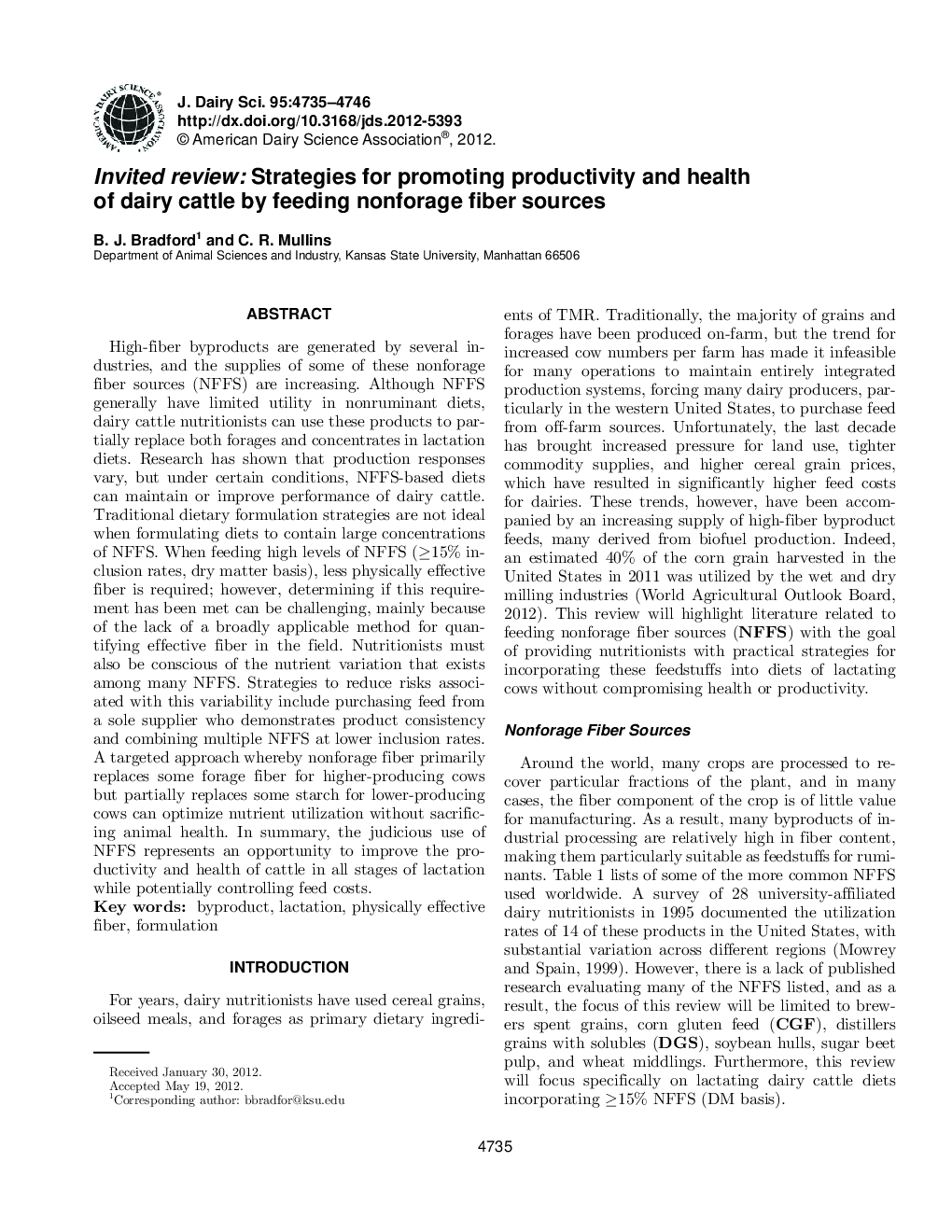| Article ID | Journal | Published Year | Pages | File Type |
|---|---|---|---|---|
| 10976744 | Journal of Dairy Science | 2012 | 12 Pages |
Abstract
High-fiber byproducts are generated by several industries, and the supplies of some of these nonforage fiber sources (NFFS) are increasing. Although NFFS generally have limited utility in nonruminant diets, dairy cattle nutritionists can use these products to partially replace both forages and concentrates in lactation diets. Research has shown that production responses vary, but under certain conditions, NFFS-based diets can maintain or improve performance of dairy cattle. Traditional dietary formulation strategies are not ideal when formulating diets to contain large concentrations of NFFS. When feeding high levels of NFFS (â¥15% inclusion rates, dry matter basis), less physically effective fiber is required; however, determining if this requirement has been met can be challenging, mainly because of the lack of a broadly applicable method for quantifying effective fiber in the field. Nutritionists must also be conscious of the nutrient variation that exists among many NFFS. Strategies to reduce risks associated with this variability include purchasing feed from a sole supplier who demonstrates product consistency and combining multiple NFFS at lower inclusion rates. A targeted approach whereby nonforage fiber primarily replaces some forage fiber for higher-producing cows but partially replaces some starch for lower-producing cows can optimize nutrient utilization without sacrificing animal health. In summary, the judicious use of NFFS represents an opportunity to improve the productivity and health of cattle in all stages of lactation while potentially controlling feed costs.
Related Topics
Life Sciences
Agricultural and Biological Sciences
Animal Science and Zoology
Authors
B.J. Bradford, C.R. Mullins,
